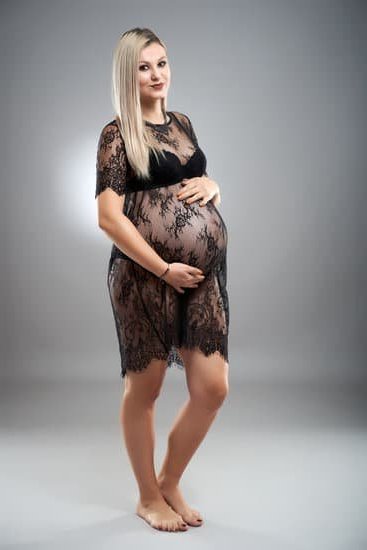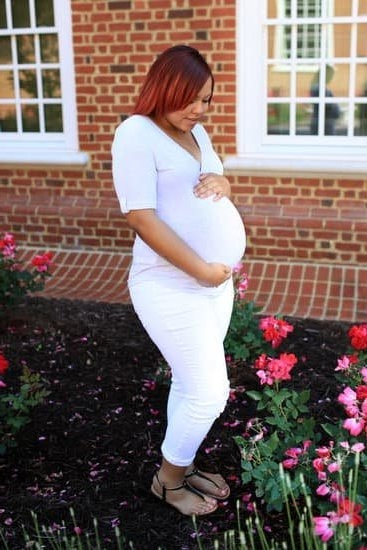Cat pregnancy can be an exciting and nerve-wracking time for cat owners. Understanding the anatomy and physiology of cat pregnancy is essential in providing the best care for your expecting feline friend.
From signs and symptoms of pregnancy to potential complications, it’s important to be well-informed. In this article, we will delve into the various aspects of cat pregnancy, including the gestation period, stages of pregnancy, nutrition and care, as well as preparing for the arrival of kittens.
The signs and symptoms of pregnancy in cats are not always obvious, making it challenging for pet owners to determine if their cat is expecting. Knowing what to look out for can help in identifying if your cat is pregnant. Additionally, understanding the gestation period of a cat is crucial in providing proper care during this time. This article will provide detailed information on how long the cat pregnancy lasts and what to expect during each stage.
Proper nutrition and care during cat pregnancy play a vital role in ensuring the health and well-being of both the mother cat and her kittens. It’s essential to provide the right diet, supplements, and veterinary care throughout the entire pregnancy. Furthermore, preparing for the arrival of kittens involves creating a safe and comfortable birthing area for the mother cat. By understanding these aspects, you can better support your expecting cat through this significant life event.
Signs and Symptoms of Pregnancy in Cats
One of the first signs that your cat may be pregnant is a change in her behavior. Pregnant cats often become more affectionate and seek out extra attention from their owners. Additionally, you may notice that your cat’s nipples are becoming more prominent and enlarged, as they prepare for nursing their future kittens.
Physical changes in the cat’s body can also indicate pregnancy. A pregnant cat may experience weight gain and a rounding of her abdomen as the pregnancy progresses. It’s important to note that these physical changes can sometimes be subtle, especially in the early stages of pregnancy, so it’s best to consult with a veterinarian for an accurate diagnosis.
Another common indicator of feline pregnancy is a decrease in energy levels and an increase in appetite. The hormonal changes that occur during pregnancy can cause cats to become more tired than usual, while also experiencing an increase in their food consumption. These behavioral and physical signs, when observed together, can help determine whether or not your cat is expecting.
| Signs of Cat Pregnancy | How to Identify |
|---|---|
| Change in Behavior | Increased Affection |
| Physical Changes | Nipple Enlargement, Weight Gain |
| Changes in Energy Levels and Appetite | Tiredness and Increased Food Consumption |
The Gestation Period
Normal Duration of Cat Pregnancy
The average length of a cat’s pregnancy, also known as the gestation period, is approximately 63 to 65 days. However, it is important to note that this can vary depending on several factors, including the individual cat and her breed. In some cases, a cat may give birth a few days earlier or later than expected, so it’s essential for cat owners to be attentive to signs of labor as the due date approaches.
Factors Affecting Length of Cat Pregnancy
Several factors can influence how long a cat pregnancy lasts. For example, first-time mothers may have a slightly longer gestation period compared to experienced queens. Additionally, environmental factors such as stress and nutrition can also impact the duration of pregnancy. It’s crucial for cat owners to provide a calm and safe environment for their expecting feline companion and ensure she is receiving proper nutrition throughout her pregnancy to support the health and development of the kittens.
Monitoring the Progress of Cat Pregnancy
Cat owners can monitor the progress of their pet’s pregnancy through regular veterinary check-ups and ultrasounds. These examinations can help confirm the number of kittens and their developmental progress while also providing an estimate for how long until birth. Being proactive in monitoring the stages of your cat’s pregnancy can help anticipate any potential complications or issues and ensure that both mother and kittens receive appropriate care during this crucial time.
The Stages of Cat Pregnancy
Cat pregnancy, just like human pregnancy, progresses through distinct stages from conception to birth. Understanding the different stages of cat pregnancy can help you provide the best care and support for your expecting feline companion. Here is a breakdown of the stages of cat pregnancy:
1. Conception: The first stage of cat pregnancy occurs when fertilization takes place after mating. This is when the male cat’s sperm meets the female cat’s egg, leading to the formation of embryos in the uterus.
2. Embryonic development: After fertilization, the embryos travel to the uterine horns where they will implant and begin to develop. This stage typically lasts for about 14 to 16 days.
3. Fetal development: Around day 16, the embryos’ organs start to form and they become recognizable as kittens on ultrasound imaging. By day 35, their skeletons are fully formed and their fur begins to develop.
4. Pre-labor: As your pregnant cat approaches her due date, she may exhibit nesting behavior by seeking out a quiet and comfortable place to give birth. This is a sign that labor is imminent.
5. Labor and birth: The final stage of cat pregnancy is labor and delivery, which typically occurs around 63-65 days after conception. During this time, your cat will experience contractions as she goes into active labor and delivers her kittens.
Understanding these stages can help you better prepare for what to expect during your cat’s pregnancy journey, from conception to birth.
During each stage of cat pregnancy, it’s important to provide proper nutrition, veterinary care, and a safe environment for your expecting cat. Ensuring that your pet receives adequate support throughout her pregnancy can contribute to a healthier outcome for both mother and kittens. Keeping an eye on her behavior can also help recognize any complications that may arise.
Nutrition and Care During Cat Pregnancy
During the exciting time of cat pregnancy, it is important to provide your expecting feline with the proper nutrition and care to support her and her developing kittens. Here are some essential tips for ensuring the health and well-being of your pregnant cat:
- Quality Nutrition: During pregnancy, your cat’s nutritional needs will increase. It is crucial to provide a high-quality, balanced diet that is specifically formulated for pregnant or nursing cats. Look for commercial cat food labeled as “complete and balanced” to ensure that it meets her specific dietary requirements.
- Regular Vet Check-Ups: Schedule regular veterinary check-ups throughout your cat’s pregnancy to monitor her health and the progression of the pregnancy. Your veterinarian can also provide guidance on specific nutritional needs, supplements, and potential weight gain.
- Hydration: Ensure that your pregnant cat has access to fresh, clean water at all times. Adequate hydration is crucial for her overall health and the development of her kittens.
Additionally, it’s important to create a comfortable and stress-free environment for your expecting cat. Providing a quiet, cozy space where she can rest undisturbed will help reduce any anxiety or stress during this delicate time.
Remember that every cat may have unique needs during pregnancy, so always consult with your veterinarian for personalized recommendations on nutrition and care based on your cat’s specific health status and gestation period. By providing proper nutrition and attentive care, you can help support your expecting cat through a healthy and successful pregnancy.
In summary, it is essential to pay attention to how long the cat pregnancy lasts but also equally important to focus on providing the right nutrition and care during this crucial period in order to ensure the health of both the mother-cat along with her newborn litter once they’ve arrived.
Preparing for the Arrival of Kittens
When preparing for the arrival of kittens, it is important to set up a safe and comfortable birthing area for your cat. This will help ensure that the mother cat feels secure and can safely give birth to her litter. The birthing area should be set up well in advance of the expected due date to allow the mother cat to become familiar with the space.
Choosing a Birthing Area
Select a quiet and private area in your home where the mother cat can have some peace and quiet during labor and nursing. A large cardboard box lined with old towels or blankets can make an ideal birthing area. Make sure the box is large enough for the mother cat to comfortably move around, but with sides high enough to contain her kittens once they are born.
Creating a Comfortable Environment
Keep the birthing area warm, quiet, and free from drafts. Provide a cozy nest of blankets or towels for the mother cat to rest on before and after giving birth. You may also consider playing soothing music at a low volume to help keep the environment calm for both the mother cat and her soon-to-arrive kittens.
Preparing for Emergencies
It’s important to be prepared for any potential complications during labor. Have essential supplies on hand, such as clean towels, sterile scissors (for cutting umbilical cords if necessary), and contact information for an emergency veterinarian. Familiarize yourself with signs of distress in cats during labor so that you can act quickly if needed. By being prepared, you can help ensure a smooth and safe delivery for both the mother cat and her kittens.
Potential Complications During Cat Pregnancy
During pregnancy, cats may experience a variety of complications that can impact their health and the well-being of their unborn kittens. It is important for cat owners to be aware of these potential complications and know what signs to watch out for. By being proactive and attentive, owners can help ensure that any issues are addressed promptly, minimizing the risk to the mother cat and her offspring.
One common complication during cat pregnancy is eclampsia, also known as milk fever. This condition occurs when the mother cat’s calcium levels drop significantly, leading to muscle tremors, weakness, and in severe cases, seizures. Eclampsia typically occurs within two weeks after giving birth but can also occur during pregnancy. Prompt veterinary attention is crucial if eclampsia is suspected, as it can be life-threatening if left untreated.
Another potential complication is dystocia, or difficult labor. This can occur if the mother cat struggles to give birth due to factors such as an abnormally positioned kitten or a narrow pelvis. Signs of dystocia include prolonged straining without producing kittens, restlessness, and signs of discomfort. If a cat owner suspects that their pet is experiencing dystocia, they should seek immediate veterinary assistance to prevent harm to the mother and her offspring.
Lastly, infections such as pyometra or uterine infections can also pose a threat during cat pregnancy. These infections can lead to symptoms like lethargy, loss of appetite, vaginal discharge, and fever. Timely diagnosis and treatment by a veterinarian are essential to prevent serious health consequences for the mother cat and her developing kittens.
| Potential Complications | What to Watch Out For |
|---|---|
| Eclampsia (milk fever) | Signs of weakness, muscle tremors, seizures |
| Dystocia (difficult labor) | Prolonged straining without producing kittens; restlessness |
| Infections (pyometra/uterine infections) | Lethargy; loss of appetite; vaginal discharge; fever |
Post-Pregnancy Care for the Mother Cat and Her New Kittens
In conclusion, understanding the anatomy and physiology of cat pregnancy is essential for providing the best care for your pet. Knowing the signs and symptoms of pregnancy in cats can help you determine if your feline friend is expecting, and understanding the gestation period is crucial in preparing for the arrival of kittens.
The stages of cat pregnancy, from conception to birth, require proper nutrition and care to support the expecting cat and her developing litter. Additionally, setting up a safe and comfortable birthing area and being aware of potential complications during cat pregnancy are important steps in ensuring a smooth delivery.
Once the kittens are born, it is crucial to provide post-pregnancy care for the mother cat and her new litter. Ensuring a healthy start for the whole family involves monitoring the mother’s health, providing a comfortable and stress-free environment for nursing, and addressing any potential complications that may arise. This will help to promote the well-being of both the mother cat and her kittens as they begin their journey through early life.
Frequently Asked Questions
How Many Months Are Cats Pregnant?
Cats are pregnant for approximately 63 to 65 days, which is about two months. It’s important to monitor your cat’s pregnancy and consult with a veterinarian for proper care during this time.
How Do I Know My Cat Is Pregnant?
There are several signs that can indicate your cat is pregnant, such as a decreased appetite, nipple changes, weight gain, and behavioral changes. However, the most accurate way to confirm pregnancy is through a visit to the vet for an examination or ultrasound.
How Many Kittens Will My Cat Have First Time?
The number of kittens a cat will have in her first litter can vary. On average, a healthy cat will have around 3 to 5 kittens in her first litter.
However, some cats may have fewer or more kittens depending on various factors such as breed and age. It’s best to consult with a veterinarian for guidance on what to expect during your cat’s first pregnancy.

Welcome to my fertility blog. This is a space where I will be sharing my experiences as I navigate through the world of fertility treatments, as well as provide information and resources about fertility and pregnancy.





